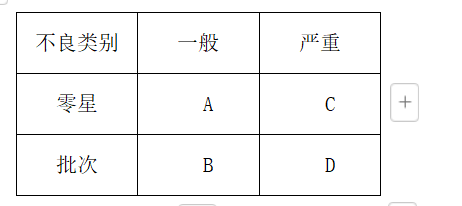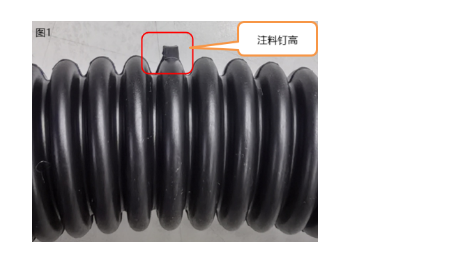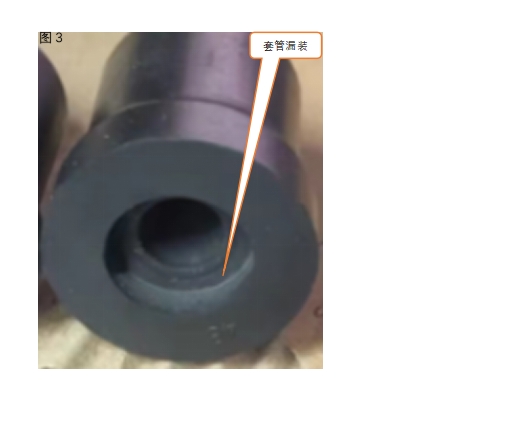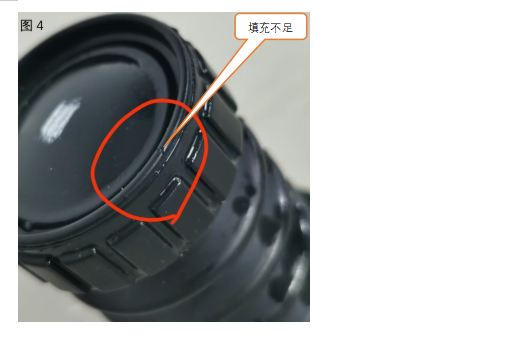Talk about the need for a return check
Release date:2024-12-24
Thoughts on returning to the inspection.
Sometimes it's wise to let go. In the long road to the pursuit of product quality, the inspection after finding bad is often regarded as the master key. But have you ever thought that in some situations, backchecking may not be the optimal solution, and may even be a mismatch of resources.
From the perspective of cost-effectiveness analysis, the cost of return inspection is often too heavy for enterprises to bear. For some low value-added products, the customer's quality personnel find a small flaw that has no impact on the use of the product (such as rubber sheath has a little rough edge) to ask the supplier to return inspection, then the unnecessary cost required for return inspection may affect the original meager product profit, in the long run, the stability of enterprise management, survival and development will face severe challenges.
From the perspective of quality control, for seriously bad products, return inspection can undoubtedly reduce the outflow of defective products to the greatest extent, reduce the huge economic losses caused by product quality hazards, and is an effective means to ensure that products are 100% qualified.
So, how should we operate when we encounter specific problems? Let's discuss it.
1 Before discussing, we must first define general adverse events, severe adverse events, sporadic adverse events, and batch adverse events.
1.1 General Defects
Refers to the defect whose adverse phenomenon does not affect the use of the product.
1.2 Serious Defects
It refers to the adverse phenomenon that has an impact on the use of the product, and will bring major hidden dangers to the use of the product.
1.3 Sporadic Defects
That is, accidental failure (same batch failure relative).
1.4 Batch Defects
It means that the cause of the occurrence of the adverse phenomenon has a common attribute, just as a mold hole number produces the same adverse phenomenon.
2 Combine the two dimensions of bad (general bad/serious bad, sporadic bad/batch bad) to generate the following matrix table:
3 According to the above combination, let's discuss the necessity of return check together:
A Generally sporadic bad
For example, the rubber bellows injection nail is too high (Figure 1). Even if the defect is not found out, because the product is a non-appearance part, the small defect has no impact on the use of the product, so the customer finds the defect in the use process, it can be picked out, there is no need to spend a lot of time to ask the supplier to return the inspection, otherwise it is overcorrection.
B Generally bad batch
Such as rubber harness jacket spray (Figure 2). Because the product is a non-appearance part, the phenomenon is the rubber vulcanization process is not all the reaction of the free substance due to changes in the external environment caused by changes in solubility, which does not have any impact on the use of the product, so you can ask the supplier to return the inspection, you can not require, can be based on the actual situation of the case.

C Severe sporadic malfunctions
Such as shock-proof rubber leakage metal sleeve (Figure 3). Because the metal casing plays a supporting role, if there is no metal casing, the component will not play a damping role, affecting the use, so the occurrence of this adverse phenomenon must be returned to its products, "would rather kill a thousand wrong, not let go of one", in order to prevent similar adverse phenomena from coming out.

D Serious batch failure
For example, the working face of a certain hole seal has insufficient filling (Figure 4). The adverse phenomenon is due to the insufficient pressure of the equipment itself, the material can not be completely injected into the mold caused by the batch of poor, there is no doubt that 100% return inspection is required to pick out the defective products with insufficient filling.

4 To sum up, generally sporadic defects are not returned to the inspection, the general batch of bad can be returned to the inspection can not be returned to the inspection (one case), other circumstances must be returned to the inspection, as shown in the following table:

In determining the above four situations, the most difficult to deal with is the situation that can be returned or not returned, which is a very test of the level of quality personnel, you can refer to the national standard GB2828 and the customer agreed on the principle of return (such as 0 return 1, 1 return 2, 2 return 3...) It can also operate according to the quality objectives of the supplier, and those that meet the quality objectives will not be returned, and those that do not meet the quality objectives will be returned. This flexible disposal method can not only ensure the product quality meets the requirements, but also effectively control the production cost. The more dare to release, the more responsible, the higher the level.
Return inspection is not in all cases are the "patron saints" of product quality, quality personnel should evaluate the situation, according to the characteristics of the industry, product characteristics and cost effectiveness and other factors of comprehensive consideration, flexible use of methods, in order to steadily move forward on the balance beam of quality and efficiency, out of a suitable for their own development of quality management road.
There is no authority, only truth.



